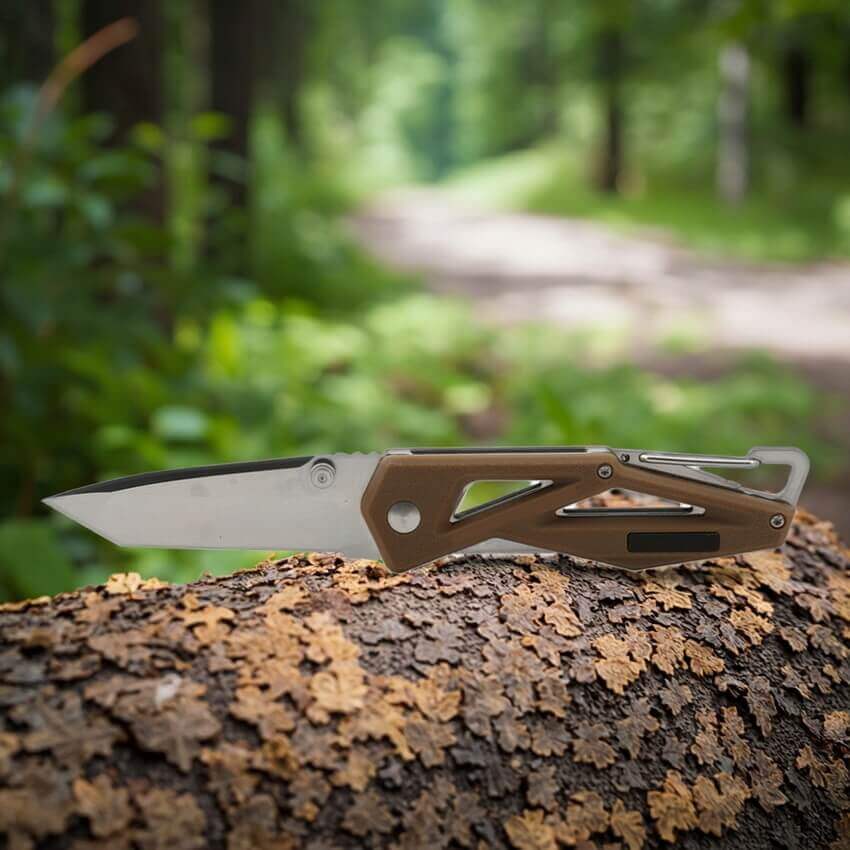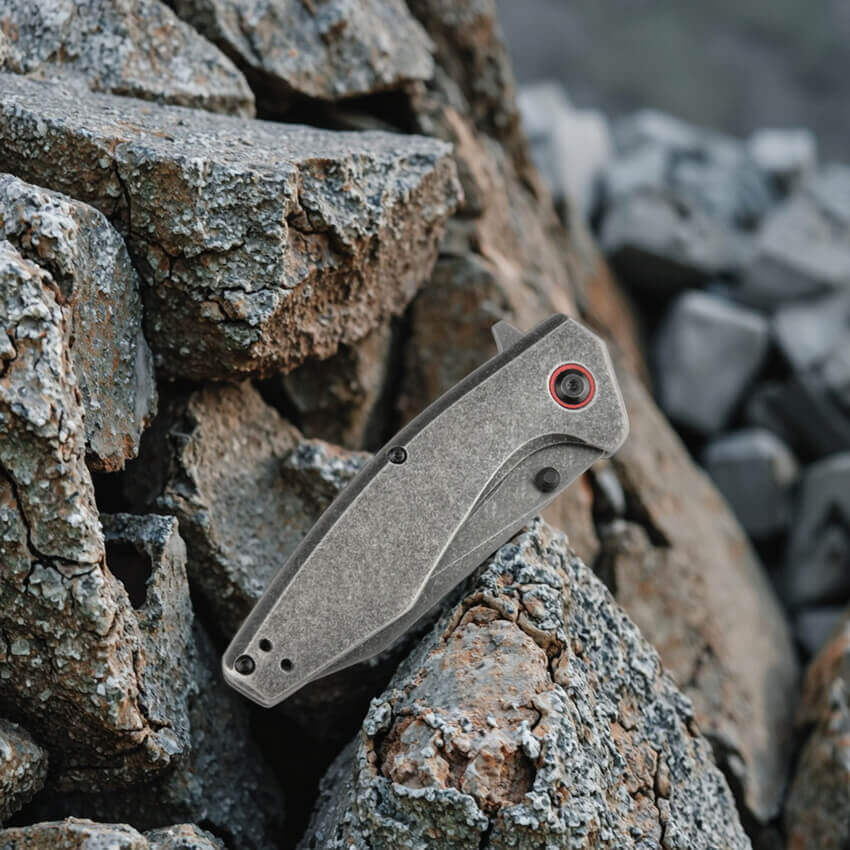![]() Windy
Windy
 WeChat
WeChat
 WhatsApp
WhatsApp
Click:60 seen
In the field of tools, "pocket knife" and "folding knife" are often confused, and some people even consider them as the same type of product. However, from the design intention, functional positioning to usage scenarios, there are clear boundaries between the two.
I. Core Definition: Defining the Boundaries Based on "Essential Attributes"
To distinguish between the two, the first step is to clearly define their core definitions - a folding knife is a "structural classification", while a pocket knife is a "usage classification". This is the most fundamental difference.
• Folding Knife: Based on the "structure" as the classification criterion, it refers to a tool whose blade can be folded and stored in the handle through a hinge, and is opposite to a "fixed-blade knife". Its core feature is "foldability", regardless of size or purpose, as long as it conforms to the structure of "foldable blade storage", it belongs to the category of folding knives. Examples include tactical folding knives, outdoor folding tool knives, mini folding pen knives, etc., all fall into this category.
• Pocket Knife: Based on the "usage and carrying method" as the classification criterion, it refers to a small-sized knife that can be easily placed in a pocket for carrying, mainly used for light-duty cutting needs. Its core feature is "portability" and "daily nature", usually equipped with simple functions (such as bottle opening, peeling, paper cutting), and must meet the size requirement of "able to fit in a pocket" (generally blade length < 10cm, overall weight < 100g).
In summary: All pocket knives are folding knives, but not all folding knives are pocket knives - folding knives are a broader "structural category", while pocket knives are a "focused on daily portability" subcategory of folding knives.

II. Design Feature Comparison: Analyzing Functional Differences from Details
Apart from defining the boundaries, the differences in design details between the two directly determine the different usage scenarios. Specifically, the following 4 dimensions can be compared:
| Comparison dimension | Pocket Knife | Folding Knife |
| Dimensions and weight | Compact and portable, the blade length is usually between 5 and 8 cm, and the overall weight is 30 to 80 grams. It can be easily placed in a pair of jeans pocket or a keychain. | The size range is wide, from the mini model (with the same pocket knife) to the tactical model (with a blade length of 10-15 cm and a weight of 100-200g). Some of them need to be stored separately. |
| Handle and locking mechanism | The handles of the knives are mostly made of plastic, wood or lightweight metals. They have simple structures and usually lack locking mechanisms (or only have simple clasps). They are designed to be lightweight. | The handle materials are diverse (such as metal, G10, carbon fiber, etc.), and most are equipped with reliable locking mechanisms (such as wire locks, back locks), ensuring the safety of use and suitable for forceful operation. |
| Functional configuration | The function is simple and mainly focused on the main operation. Some basic tools such as a bottle opener and nail file are also included. There is no complex design. | The functions are flexible and can be configured according to the purpose (such as the tactical model with serrated teeth and window-breaking tool; the outdoor model with screwdriver and saw blade; the tool model with various bits) |
| Blade design | The blade is mostly a smooth one, with a relatively thin edge, suitable for light cutting (such as paper cutting, fruit peeling, and parcel unpacking) | The blade types are diverse (smooth blade, serrated blade, tanto blade, etc.), and the thickness of the blade edge is adjusted according to the purpose (tactical models are thicker, focusing on strength; outdoor models are moderate, balancing cutting and durability) |

III. Usage Scenarios: Differentiation Based on Demand Matching
The differences in design directly point to the differentiation of usage scenarios. The applicable scenarios of the two are almost non-overlapping and can be classified into two categories: "Daily Light Usage" and "Special Scenario Usage":
1. Pocket Knife: Focus on "Daily Light Needs"
The core positioning of the pocket knife is "Daily Carry Tool". The applicable scenarios are mostly for light cutting needs in daily life, such as:
• Daily unpacking of packages, cutting of packaging strings;
• Outdoor picnics, peeling fruits, cutting sandwiches;
• Office tasks like cutting paper, opening sealed file bags;
• Home use like opening bottle caps, sharpening pencils, etc.
Its advantage lies in "Unburdened Carry" - no need to prepare a separate storage bag, can be carried in the pocket or keychain, can be taken out when needed, folded and stored after use, not occupying too much space.
2. Folding Knife: Covers "Special Scenario Needs"
The usage of folding knives is more extensive. Depending on the specific type, it can be adapted to different special scenarios. The core is "Satisfying efficient and safe operations in specific scenarios", such as:
• Tactical Folding Knife: Equipped with high-strength blade and locking mechanism, suitable for military and police training, outdoor self-defense (subject to legal regulations), capable of handling cutting of harder materials (such as ropes, fabrics);
• Outdoor Folding Knife: Durable blade, with auxiliary tools (such as saw blades, fire starters), suitable for camping, hiking, cutting wood, handling food, repairing equipment;
• Tools Folding Knife: Integrates screwdrivers, wrenches, wire strippers, etc., suitable for electricians and maintenance personnel for on-site operations, replacing some small tools;
• Mini Folding Knife: Size similar to the pocket knife, but with more limited functions (only main knife), suitable for those who have no additional functional requirements and only need basic cutting (can be regarded as a "Simplified Version of Pocket Knife").
It should be noted that: Some mini folding knives have "overlap" with pocket knives, but the core still depends on "Usage" - if the mini folding knife is only used for light daily cutting and meets the portability requirements, it can be classified as a pocket knife; if the mini folding knife has a locking structure and high blade strength, used for outdoor or work scenarios, it is more inclined to be a "Special Folding Knife".

IV. Legal Definition: Using Boundaries from Compliance Perspective
In different countries/regions, the legal regulations for the two also vary. The core lies in "Size" and "Locking" two key points, which are also important references for distinguishing them:
• Pocket Knife: Due to its small size and no locking (or simple locking), legal restrictions are usually more lenient. For example, in China, pocket knives with a blade length of < 10cm and no locking device are not considered "Controlled Knives", and can be legally carried; in European and American countries, most regions allow carrying pocket knives, and some countries only restrict the models with a "blade length > 11cm".
• Folding Knife: Legal restrictions are stricter, especially for models with locking structures and larger size. For example, in China, folding knives with a blade length > 10cm and with locking devices may be classified as "Controlled Knives", and cannot be carried legally; in European and American countries, tactical folding knives, butterfly knives, etc. may be classified as "Dangerous Weapons", and need to apply for permission to carry or purchase.
Compliance advice: Regardless of which knife is chosen, it is necessary to understand the local "Identification Standards for Controlled Knives" in advance to avoid illegal consequences due to "Misjudgment of Type". Daily carrying should prefer "Unlocked, Small Size" pocket knives, and for special scenarios, it is necessary to confirm whether the knife meets the scenario requirements and legal regulations.

V. Purchase Guide: How to Select Precisely Based on Needs
After clarifying the differences between the two, when purchasing, one can follow the "Scenario Priority" principle and combine personal needs to judge: 1. For "daily carry and light usage": Choose a pocket knife. Focus on "size (blade length < 10cm), weight (< 80g), portability (whether it can be attached to a keychain or placed in a pocket)", and functionally prioritize "main knife + 1-2 commonly used small tools" (such as a bottle opener).
2. For "special scenarios and high-intensity usage": Select the corresponding type of folding knife. For example, for outdoor camping, choose an outdoor folding knife with "saw blades and secure locking"; for tactical needs, choose a tactical folding knife with "high-strength blade and reliable locking"; for maintenance work, choose a tool folding knife with "multi-tool integration".
3. Compliance priority: Before purchasing, confirm the local laws' restrictions on "blade length and locking device" to avoid being unable to legally carry or use after purchase.

Conclusion
The difference between a Pocket Knife and a Folding Knife lies fundamentally in the "differential of purpose and structure" - the former is a "sub-category of portable folding knives for daily use", while the latter is "a broad category of foldable tools". Distinguishing between the two can not only help us precisely match the needs, but also avoid the risks or legal issues caused by "misjudgment of type". No matter which type of knife is chosen, "safe use and compliant carrying" remain the core principle, making the knife truly become a tool for convenient life rather than a safety hazard.
